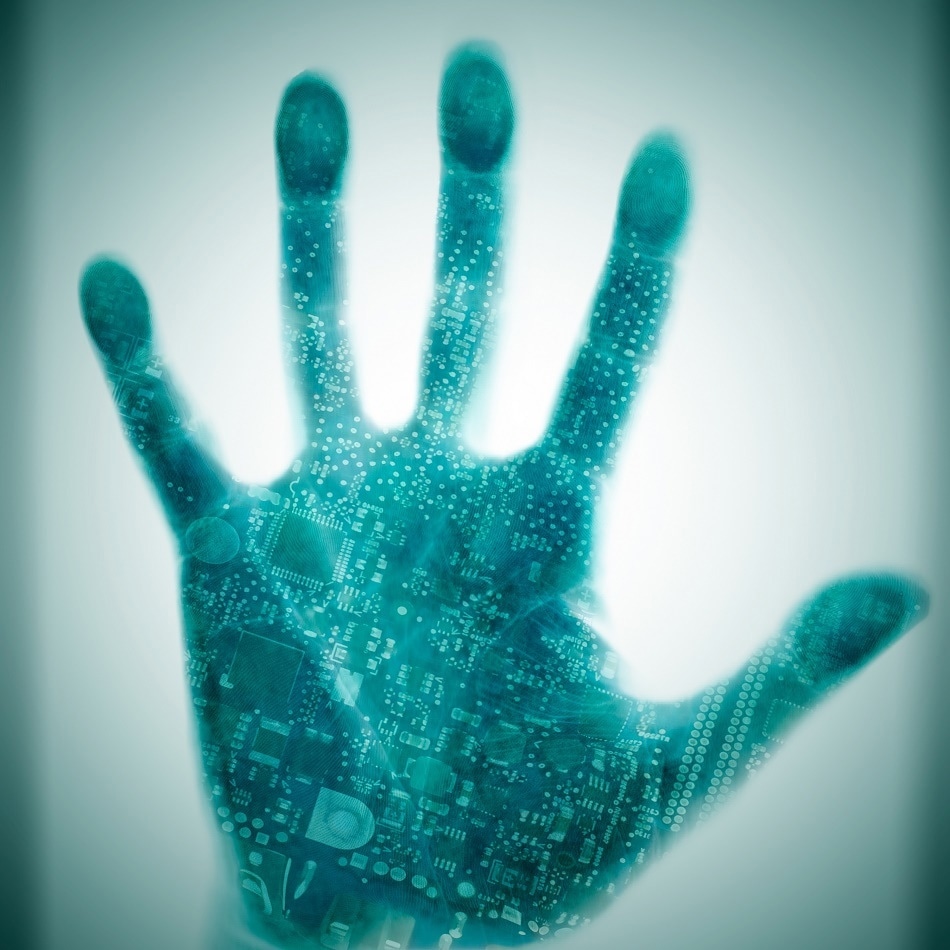 By Samudrapom DamReviewed by Susha Cheriyedath, M.Sc.Updated on Sep 6 2024
By Samudrapom DamReviewed by Susha Cheriyedath, M.Sc.Updated on Sep 6 2024Soft robotics is an innovative and rapidly expanding field that mimics the locomotion mechanisms of soft biological systems observed in nature, enabling smooth and complex motion. From healthcare to underwater exploration, soft robots are unlocking possibilities once thought unreachable by conventional rigid-bodied robots.

Image Credits: Makushin Alexey/shutterstock.com
By using materials with elasticities similar to soft biological organisms, soft robots achieve high degrees of freedom, allowing them to interact safely and compliantly with their surroundings. As a result, these robots have the potential to outperform rigid robots in dynamic, unpredictable environments.
Taking the Pressure Off for Soft Robotics with Flexible Hybrid Sensor Breakthrough
Soft Robotics: A New Frontier in Flexibility
Inspired by nature, soft robotics draws from various disciplines—including mechanics, control science, optics, and magnetism—to create machines capable of performing multiple tasks simultaneously. Traditional rigid robots are typically designed for specific tasks in controlled environments, while soft robots thrive in dynamic settings thanks to their flexible, adaptive designs.1-3
Soft robots can be classified based on either the materials used for actuation or the tasks they perform:
1. By Actuation Materials
- Ion-Exchange Polymer-Metal Composites: Flexible materials that respond to electric stimuli.
- Shape-Memory Alloys (SMA): Metals that change shape when heated, allowing for controlled deformation.
- Dielectric Elastomers: Stretchable materials that move under electrical fields.
- Pneumatic Systems: Utilize compressed air to create movement.
- Magnetic Actuators: Incorporate magnetic materials controlled by external magnetic fields.
2. By Task Type
- Manipulators: Designed to handle delicate or irregularly shaped objects.
- Swimming Robots: Mimic aquatic locomotion for underwater exploration.
- Crawling and Jumping Robots: Suitable for navigating complex terrain or confined spaces.
- Grippers: Used in industrial applications to handle objects with varying sensitivity.
A more recent classification, inspired by biological systems, divides soft robots into four categories:
- Self-Growing Soft Robots (SGSRs): SGSRs are a class of robots designed to grow and build themselves, enabling them to attach, explore, and move as part of their operation. These robots aim to replicate growth phenomena through self-construction, mirroring the intricate biological processes seen in cellular activity. SGSR structures typically consist of three main units: the orientation-adjustment unit, the elongation unit, and the stable base unit. These correspond to growth direction control, elongation capability, and the overall controllability of the growth process, respectively.
- Self-Healing Soft Robots (SHSRs): Self-healing soft robots exhibit damage tolerance and functional recovery, depending on the body region and the degree of injury. Damage tolerance enables robots to continue functioning despite minor injuries, while function recovery restores their full operational capability after sustaining more serious damage.
- Self-Responsive Soft Robots (SRSRs): SRSRs are designed to actuate movements in response to various stimuli. Depending on the type of stimuli, these robots incorporate different materials, including ion-exchange polymer-metal composites, dielectric elastomers, magnetic actuators, tribo/piezoelectric nanogenerators, and shape-memory materials. These materials enable the robots to respond to optical, pH, magnetic, electrical, mechanical, or thermal stimuli.
- Self-Circulatory Soft Robots (SCSRs): SCSRs mimic key biological functions, such as sensitivity and nutrition processes, enhancing the comprehensive capabilities of soft robots. These systems represent the integration of diverse functional processes, pushing the boundaries of what soft robotics can achieve.2
Soft Robotic Actuation Modalities
Actuators, often referred to as the "artificial muscles" of soft robots, are essential for enabling their movement and deformation. The choice of actuation modality greatly influences the design, performance, and capabilities of soft robots. Below are key actuation types commonly employed in soft robotics:
Magnetic Actuation
Magnetic actuation operates through the alignment of magnetic materials under the influence of an external magnetic field. This modality enables the development of compliant, untethered soft robots capable of operating in sensitive and unstructured environments, such as internal body cavities or the brain. Robots utilizing magnetic actuation typically integrate microscopic ferromagnetic particles into their elastomeric structures, allowing precise, remote control of movement.
Thermal Actuation and Shape-Memory Alloys (SMAs)
Shape-memory alloys (SMAs), temperature-responsive metallic composites, are commonly used in soft robots' artificial muscles. These materials exhibit the shape-memory effect and superelasticity, allowing them to act as structural components within the elastomeric matrices of soft robots. Actuation occurs when SMAs change shape due to Joule heating, enabling deformation and movement in response to temperature variations.
Electrostatic/Electrochemical Actuation
Electrostatic and electrochemical actuation rely on the direct conversion of electrical energy into mechanical deformation. These modalities are frequently employed in soft robotic systems, with actuators designed to function similarly to capacitors or ion-conducting materials. They provide a reliable mechanism for actuating soft robots, particularly in applications where precise control of movement is required.
Biohybrid Actuation
Biohybrid actuation in soft robotics involves incorporating contractile eukaryotic cells, such as cardiomyocytes and skeletal muscle cells, into the design of soft robots. These cells, which are naturally compliant and soft, offer a sustainable and eco-friendly source of material for building soft robots. By leveraging the advanced functions of living cells, biohybrid actuation opens up new possibilities for the performance and adaptability of soft robotic systems.
Fluidic Actuation
Fluidic actuation is a widely used method for controlling the deformation of soft robots. This approach utilizes the spatiotemporal control of fluid pressure within the robot’s internal inflatable cavities and channels to generate motion. Soft robots constructed from elastomeric materials often include one or more inextensible reinforcement layers around their internal cavities, which are actuated through this method. Fluidic actuation allows for a range of motion, such as elongation, twisting, and bending, and can produce significant forces.3,4
Applications
Soft robotics is transforming industries by offering new capabilities in flexibility, compliance, and adaptability. Some of the industries benefiting from these advancements include healthcare, underwater exploration, industrial automation, and search-and-rescue operations.
Soft robots are increasingly being used in healthcare for tasks that require precision and minimal invasiveness. For instance, soft robotic gloves are assisting patients with rehabilitation by mimicking natural hand movements, aiding in recovery from neurological conditions. Additionally, soft robots are being developed for minimally invasive surgeries and targeted drug delivery systems, where their delicate, flexible structures allow for safer interactions with human tissues.
Soft robots are particularly well-suited for underwater environments, where their flexibility allows them to navigate complex ecosystems without causing damage. Their bioinspired designs enable tasks like monitoring coral reefs and retrieving objects from the ocean floor. However, the challenge of durability remains, as the soft materials used in these robots can degrade under mechanical stress or extreme conditions. Ongoing research into self-healing materials offers hope for overcoming these obstacles.
In industries like manufacturing and packaging, soft robots are employed for handling fragile or irregularly shaped objects. Their ability to adjust stiffness and apply minimal force reduces the risk of damage to sensitive materials. However, the limited force output of soft robots remains a challenge for tasks requiring significant strength and precision.
Soft robots excel in search-and-rescue missions, where they can navigate through debris or tight spaces that are inaccessible to traditional robots. Their adaptability allows them to perform life-saving tasks, such as locating survivors in collapsed buildings. However, the complexity of controlling these robots in unpredictable environments requires advanced control systems to ensure reliable performance.
Challenges and Future Directions
Despite their impressive capabilities, soft robots face several challenges. Issues like limited durability, control complexity, and limited force output need to be addressed for widespread use in demanding applications. Ongoing research into advanced fabrication methods, such as 3D printing, could help enhance their functionality and make them more accessible.
The development of more robust self-healing materials is crucial for long-term applications in extreme environments, like deep-sea exploration or disaster zones. Additionally, advances in AI and machine learning could improve the control systems for soft robots, enabling them to operate autonomously in complex, unpredictable settings.
Conclusion: A Soft Future
Soft robotics represents a cutting-edge field with vast potential across industries ranging from healthcare and environmental exploration to industrial automation and disaster response. As innovations continue, soft robots will likely play an increasingly vital role in a wide range of applications, offering unprecedented flexibility, precision, and safety. By pushing the boundaries of what robots can do, soft robotics is poised to transform how we approach complex tasks, making the future of robotics softer, smarter, and more adaptive.5
Can Soft Robots Become Truly Sustainable?
References and Further Reading
- Soft Robot [Online] Available at https://www.sciencedirect.com/topics/engineering/soft-robot (Accessed on 05 September 2024)
- Yang, Y., He, Z., Jiao, P., Ren, H. (2022). Bioinspired soft robotics: How do we learn from creatures?. IEEE Reviews in Biomedical Engineering. DOI: 10.1109/RBME.2022.3210015, https://ieeexplore.ieee.org/abstract/document/9904027
- Yasa, O. et al. (2023). An overview of soft robotics. Annual Review of Control, Robotics, and Autonomous Systems, 6(1), 1-29. DOI: 10.1146/annurev-control-062322-100607, https://www.annualreviews.org/content/journals/10.1146/annurev-control-062322-100607
- Soft Robotics [Online] Available at https://biodesign.seas.harvard.edu/soft-robotics (Accessed on 05 September 2024)
- Tauber, F. J., & Slesarenko, V. (2023). Early career scientists converse on the future of soft robotics. Frontiers in Robotics and AI, 10, 1129827. DOI: 10.3389/frobt.2023.1129827, https://www.frontiersin.org/journals/robotics-and-ai/articles/10.3389/frobt.2023.1129827/full
Disclaimer: The views expressed here are those of the author expressed in their private capacity and do not necessarily represent the views of AZoM.com Limited T/A AZoNetwork the owner and operator of this website. This disclaimer forms part of the Terms and conditions of use of this website.